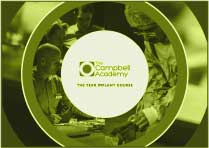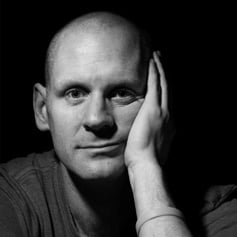.png?width=1627&height=517&name=Full%20TCA%20Logo%20(Purple).png)
It’s nearly 4 years (how time has flown) since we decided to submerge ourselves in a digital adventure at The Campbell Clinic in Nottingham going ‘all in’ on a full service of a Sirona set up for restorative dentistry, implant dentistry and anything else that was coming along the track.
From time to time I try to write these little updates to tell you where we are with things in the hope that it allows you to consider what we see to help inform what you might do and also to share comments about where we’re getting things wrong to improve our practice overall.
The digital aspect of implant planning in the practice is now utterly embedded within our planning protocols.
As I write this Andy is downstairs providing a Full Arch case on a Straumann co-diagnostix guided surgical guide on a patient whom we have retained some (dubious) teeth to allow the guide to seat and provided her with a temporary restoration which has been milled in our milling machine after digital planning.
In this case we would have taken conventional models after the strategic teeth were prepared followed by extraction of all other remaining teeth and then fitting of the eggshell temporary restoration.
The patient will then have implant surgery with the co-diagnostix guide for the best possible implant placement to be achieved; the eggshell temporary will go back on. The area will heal for 12 weeks (this patient was not suitable for an immediate full arch reconstruction). Then the teeth can be strategically extracted before fitting of a provisional implant full arch bridge of the same design of the temporary (looking exactly the same) following a period of wearing the temporary bridge. If we’re happy with this we can then duplicate this and make the final restoration in ceramic.
All of this from start to finish can now be carried out in the practice except the milling of the metal framework that is carried out by Createch in Spain.
The models are scanned digitally and then emailed to Createch who send a design of the framework back to us to verify and then mill at our request; the framework is then posted to us.
This framework is used to support individual milled ceramic crowns that are removable if there is a problem, a chip or a break.
Within this process we use Cerec at the present time for intra oral digital scanning. We use the Cerec for our Cerec restorations for our implant study models, for ortho (invisalign cases) and for surgical guide preparation. We use the Cerec 4 axis milling machine for chair side milling for individual cerec restorations but use the Sirona 5 axis milling machine for milling all other restorations including full arches.
At the present time we’re still milling our surgical guides in the 5 axis milling machine but in the next couple of weeks our 3D printer should arrive (this is provided by Straumann) which will take us to a whole other level of printing surgical guides, printing models and also printing jaws prior to larger implant surgery cases for us to do surgery and patient evaluation.
I haven’t written about this much over the last little while because we’ve been refining the protocols.
One of the things that we’ve learned the hard way is that full arch implant zirconia bridges break and certainly with us they break much more often than is acceptable.
We worked really hard with the protocol for Zirconia bridges to get things as accurate and as predictable as possible but even with the connector sizes defined by the manufacturers we’ve seen multiple fractures of bridges. We’ve returned back to metal substructures with individual crowns as our most predictable restoration for a practice that guarantees implants reconstructions for 10 years.
Technology breaks, and the more complicated your systems become the more you need to pay attention to the complexity. You need to be aware of the more maintenance, training and developing it takes to integrate things. The question is after 4 years do we feel that we’ve made a difference, improved quality, improved the patient experience and improved our dentistry overall.
The short answer to that question is yes, but there is a longer deeper answer to the question.
The improvement with the integrations of digital technology into dentistry and healthcare comes at the expense of a commercial market that is desperate to sell products that are not yet ready to be released or have a tendency to be unpredictable.
This is the biggest challenge we have going forwards. Balancing the opportunities with extraordinary digital tools against the predictability and also lack of evidence of the materials and techniques that are used.
Zirconia has been a perfect example in this. The porcelain fused to metal bridges are extremely predictable in the long term, both in research and in our own anecdotal practice experience.
Zirconia is a new product with a limited life span so far in dentistry. It has nothing like the volume of data or research that other restorative materials have yet it’s pushed upon us commercially as though it’s the answer to all problems.
This balancing act between embracing new materials or technique to improve outcomes yet repelling the over commercialization of healthcare which encourages us to disregard evidence will always exist from now on in and digital dentistry will be one of the major battle grounds.
This doesn’t mean it’s not exciting, interesting and beneficial to the patients but you have to take it on with a clear head.
Blog post number: 1485





Leave a comment